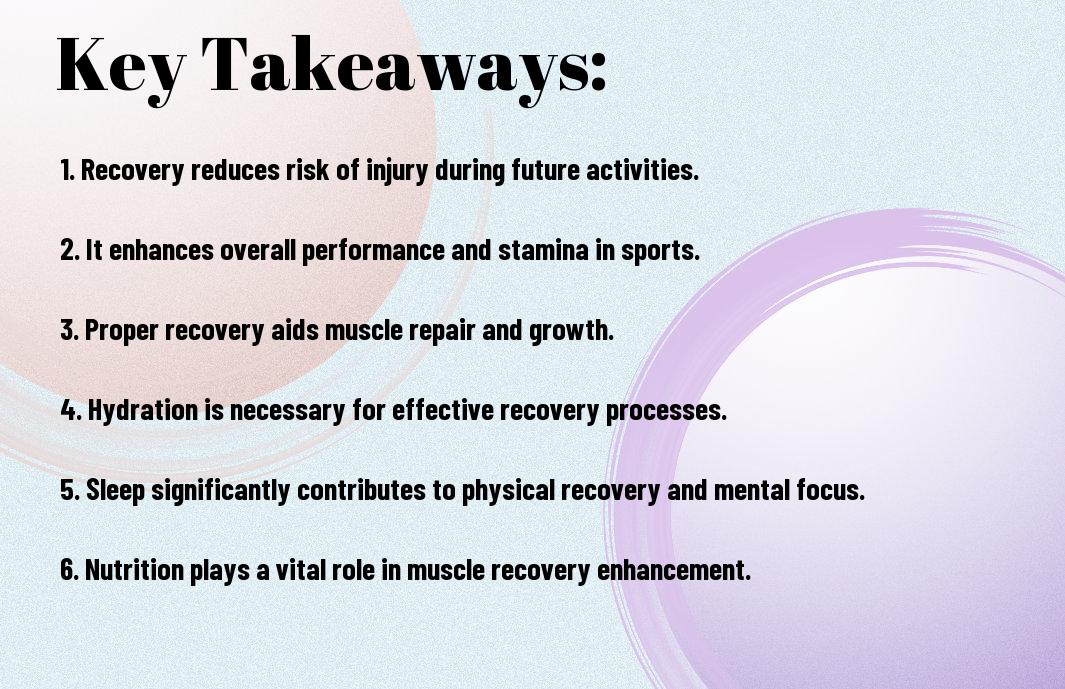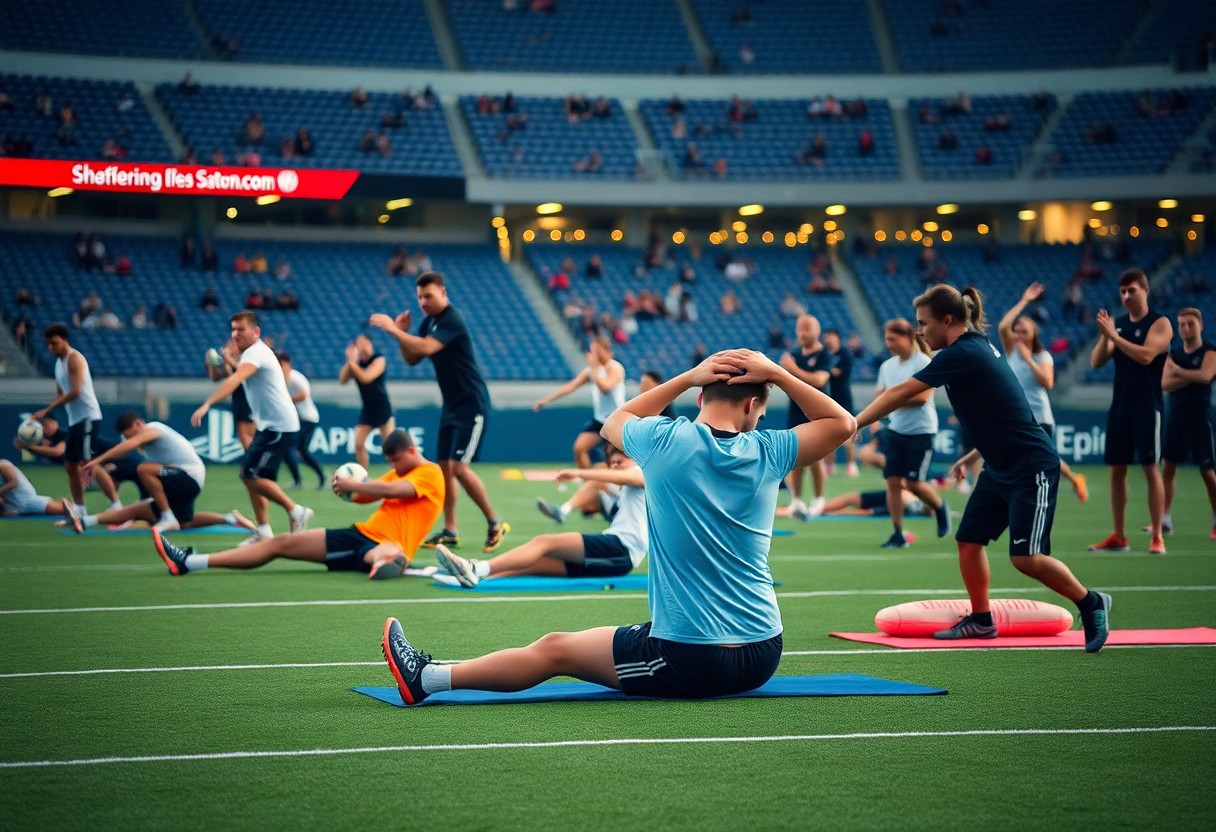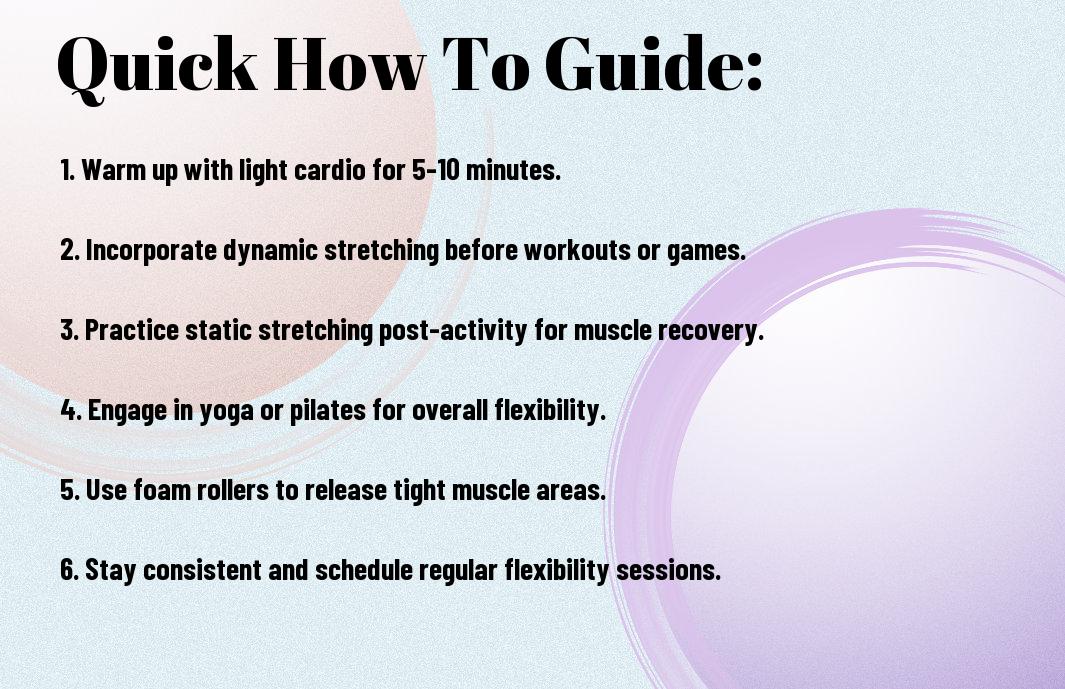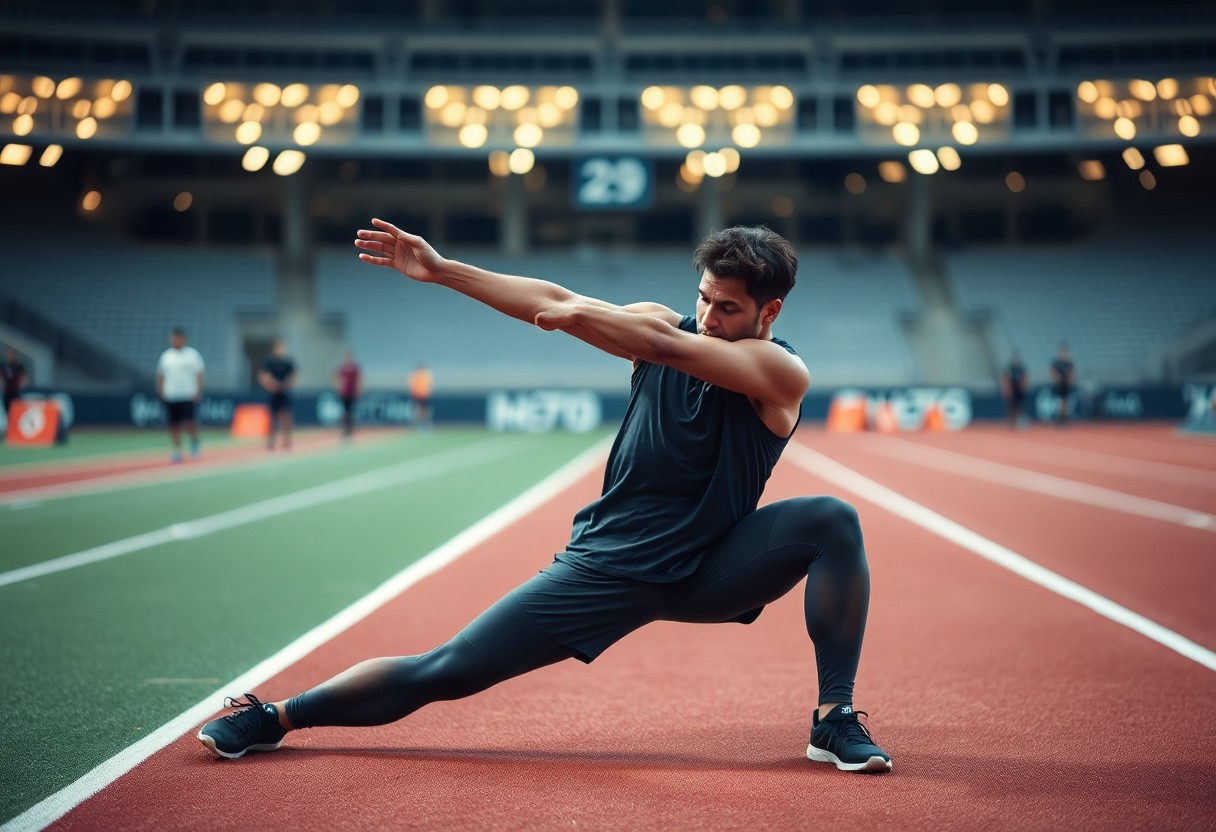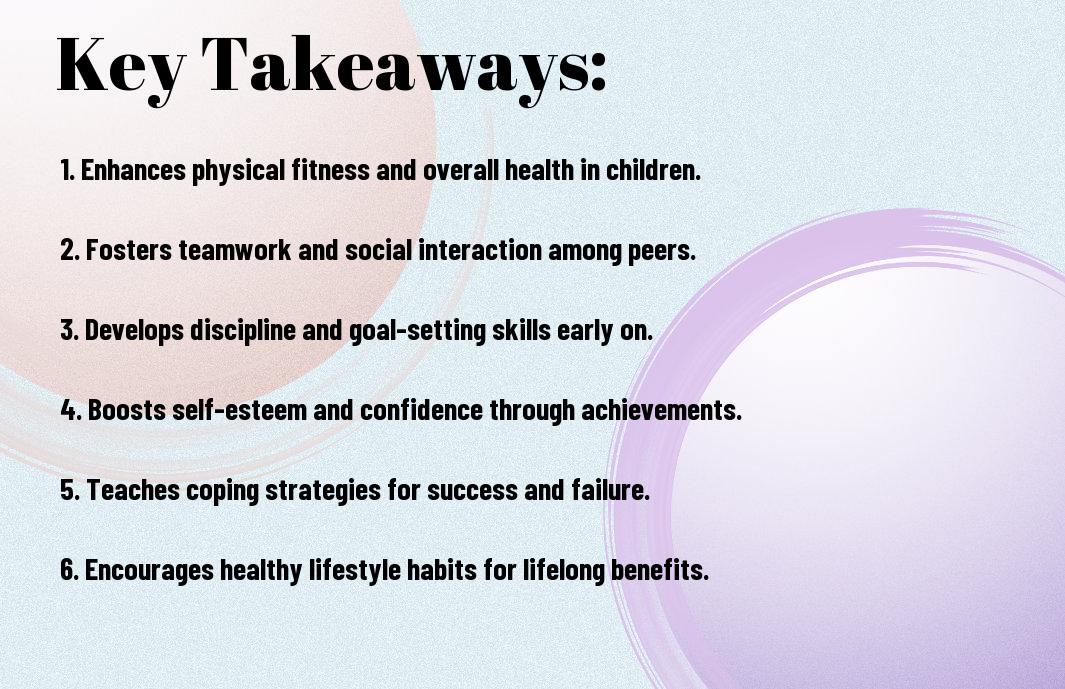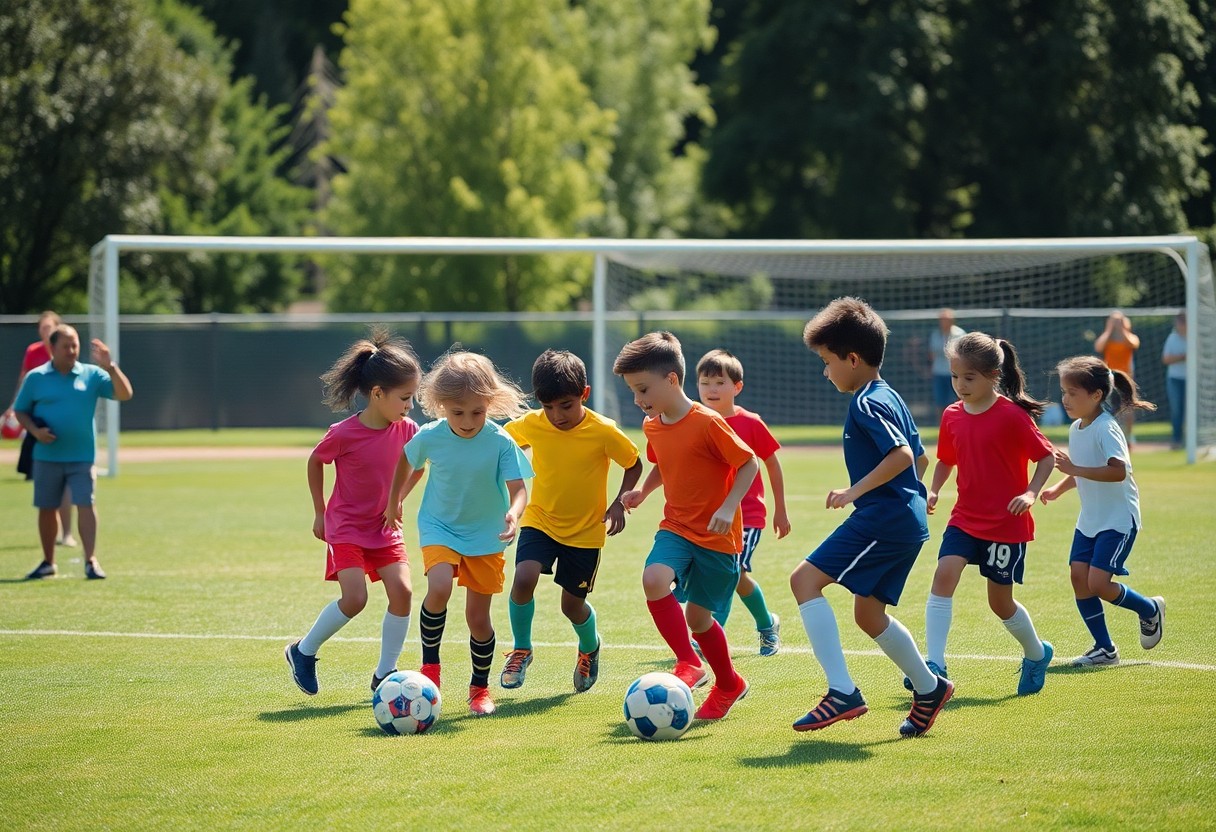This guide will help you cultivate a winning mindset that empowers you to excel in sports. By harnessing mental techniques, you’ll enhance your performance and overcome challenges both on and off the field. You’ll learn strategies to boost your confidence, focus, and resilience, allowing you to push through obstacles and achieve your goals. Whether you’re a beginner or an experienced athlete, adopting a winning mindset is key to unlocking your full potential. Let’s explore the steps you can take to transform your mental approach and elevate your game.
Key Takeaways:
- Focus on Process: Prioritize the training and daily routines over outcomes to build consistency and resilience.
- Visualize Success: Engage in mental imagery to enhance performance and create a strong belief in your abilities.
- Embrace Challenges: View obstacles as opportunities to grow and develop skills, fostering a growth mindset.
- Stay Positive: Cultivate an optimistic outlook by practicing gratitude and positive self-talk to enhance motivation.
- Learn from Failure: Analyze setbacks to derive lessons that contribute to future accomplishments and personal improvement.

Understanding the Winning Mindset
To create a winning mindset in sports, you must first understand what it entails. This mindset comprises a blend of focus, resilience, and determination that empowers you to overcome challenges and pursue excellence in your athletic endeavors. By developing this mindset, you set the foundation for achieving your goals and elevating your performance to new heights.
Definition of a Winning Mindset
Mindset refers to the established set of attitudes and beliefs that shape your approach to competition and training. A winning mindset encourages positive self-talk, fostering an environment where you can visualize success and build confidence in your abilities. By embracing this mentality, you enable yourself to respond proactively to setbacks and push beyond your perceived limits.
Importance in Sports
For athletes, a winning mindset significantly influences performance outcomes. It shapes how you react to both victory and defeat, allowing you to maintain composure under pressure. With this mindset, you’re more likely to adopt effective strategies during practice and competitions, enhancing your skill development and overall athletic growth.
The winning mindset fosters mental toughness, which is integral in high-stakes sports situations. When facing adversity, your ability to stay focused and resilient can determine your performance. Additionally, this mindset encourages a growth-oriented perspective, allowing you to embrace challenges as opportunities to learn. By prioritizing a winning mindset, you position yourself to consistently strive for excellence while navigating the pressures of competition.

Key Factors for Developing a Winning Mindset
While building a winning mindset in sports, focus on important factors that shape your mental approach. These factors include:
- Positive Self-Talk
- Visualization Techniques
- Emotional Control
- Focus and Concentration
- Supportive Environment
Assume that prioritizing these elements will guide you toward achieving your sports goals.
Mental Resilience
Little setbacks are a natural part of sports, but your ability to bounce back is what sets you apart. Fostering mental resilience allows you to confront challenges head-on, maintain your motivation, and cope with the pressures that come with competition.
Goal Setting
While aspiring to improve your performance, goal setting acts as a roadmap to guide you through. You should set achievable, yet challenging, goals that align with your aspirations to help you stay focused and motivated throughout your athletic journey.
The key to effective goal setting lies in establishing both short-term and long-term objectives. Short-term goals help you track progress and encourage daily commitment, while long-term goals provide a broader vision for your growth as an athlete. Make sure to regularly revisit and adjust your goals to keep them relevant and challenging.
Tips for Building Confidence
Unlike natural talent, confidence is something you can actively cultivate. To build your confidence, consider the following strategies:
- Set realistic goals to track your progress.
- Celebrate small achievements to boost your morale.
- Surround yourself with positive influences that uplift you.
- Focus on your preparation and skill development.
After implementing these tips, you’ll find your confidence steadily increasing, positioning yourself for greater success in sports.
Visualization Techniques
You can enhance your performance and self-assurance by using visualization techniques. Imagine yourself succeeding in specific situations, from perfecting your skills to winning important games. This mental rehearsal primes your mind and body, making actual execution much smoother.
Positive Self-Talk
For effective self-enhancement, practice positive self-talk. Replace self-doubt and negative thoughts with affirmations that reinforce your abilities. This inner dialogue can significantly impact your performance on the field or court.
A supportive inner voice can change the way you perceive challenges and setbacks. By affirming your strengths and visualizing success, you create a mindset that fosters resilience and determination. Make a habit of speaking to yourself with encouragement, as it lays the groundwork for consistent performance and helps you face competition with confidence.
Embracing Challenges
Your journey in sports is filled with challenges that can shape your character and mindset. Embracing these obstacles not only fosters resilience but also helps you grow as an athlete. When you face difficulties head-on, you develop the mental toughness required to excel, allowing you to push beyond your limits and discover your true potential. Every challenge presents an opportunity to learn and improve, reinforcing the belief that success is built on perseverance and effort.
Overcoming Fear of Failure
To conquer the fear of failure, it is necessary to shift your perspective. Instead of viewing failure as a reflection of your abilities, see it as an necessary part of the growth process. Accept that setbacks are inevitable, and each misstep brings you one step closer to your goals. By focusing on what you can gain from the experience, you will find the courage to take risks and challenge yourself, ultimately leading to greater achievements in your athletic pursuits.
Learning from Setbacks
An necessary aspect of building a winning mindset in sports is the ability to learn from setbacks. Each obstacle presents a chance for introspection and growth, enabling you to analyze what went wrong and how to improve. Rather than dwelling on disappointment, take the time to understand your mistakes and formulate a plan to avoid them in the future. Embracing this learning process will empower you to approach future challenges with confidence and determination.
Learning from setbacks allows you to reevaluate your strategies and refine your approach. When you analyze what happened, you can identify patterns that may be holding you back. This proactive attitude not only facilitates personal growth but also equips you with valuable insights that can enhance your performance in future competitions. As you experience and overcome challenges, you’ll build a stronger foundation for success, fostering a mindset that thrives on resilience and adaptability.
Cultivating a Support System
Not everything can be achieved alone; building a winning mindset thrives on a solid support system. Surround yourself with individuals who inspire and uplift you, providing motivation during challenging times. Whether it’s family, friends, or fellow athletes, a strong support network fosters a positive environment that encourages growth and resilience. Seek out those who push you to excel and share your vision, ensuring that you stay connected to your goals while navigating the ups and downs of your sporting journey.
Role of Coaches and Mentors
Even in the face of intense competition and personal challenges, the guidance of coaches and mentors can significantly influence your mindset. These experienced individuals not only provide vital feedback and tactical insights but also serve as role models. They can instill confidence in you, helping to foster a sense of belief in your abilities, and offering strategies to overcome mental hurdles.
Importance of Team Dynamics
Systematic collaboration and harmony among teammates can dramatically enhance your performance and mindset. When you engage with your team, you cultivate trust and build strong connections that reinforce your determination to succeed as a unit. Each member’s unique strengths and perspectives can contribute to a collective mindset that embraces accountability and shared objectives. A unified team fosters a culture where each individual feels valued, enhancing your confidence and pushing you to strive for your best.
A supportive team dynamic encourages open communication and camaraderie, which can alleviate the pressure associated with competitive sports. When you feel connected to your teammates, you’re more likely to share your struggles and triumphs, leading to unparalleled emotional and psychological support. This synergy amplifies motivation and creates a shared commitment to success, ensuring that you and your teammates work in tandem to push one another toward excellence.
Consistent Practice and Training
For athletes wanting to cultivate a winning mindset, consistent practice and training is imperative. Regularly honing your skills not only enhances performance but also builds the mental resilience that sets winners apart. Engaging in focused training routines can help you develop a winning attitude, as outlined in this resource on How to Develop a Winning Attitude in High Performance ….
Routine Building
Little changes in your daily routine can significantly impact your training effectiveness. Establishing a structured schedule helps you commit to your practice, creating a sense of discipline that reinforces your dedication to the sport. The more consistent you are, the more your effort will translate into improving performance.
Focus on Improvement
With an emphasis on improvement, you foster a mindset that prioritizes progress over perfection. Rather than fixating solely on outcomes, shift your attention to refining your skills each day, no matter how small the enhancement may seem.
The journey of improvement can involve setting specific, measurable goals that challenge you while remaining achievable. Break down your larger objectives into smaller milestones, allowing you to celebrate each victory along the way. By developing this focus on continuous improvement, you will cultivate resilience and adaptability in both training and competition.
To wrap up
With these considerations, you can build a winning mindset in sports by focusing on setting clear goals, embracing a growth-oriented approach, and maintaining resilience in the face of challenges. Cultivating positive self-talk and surrounding yourself with supportive teammates can further enhance your mental game. Consistency in practice and visualization techniques can also empower you to perform at your best. By integrating these strategies into your routine, you can develop the mental toughness required to excel and achieve your athletic aspirations.
Q: What are the key components of a winning mindset in sports?
A: A winning mindset in sports involves several key components: self-belief, resilience, focus, and a strong goal orientation. Self-belief refers to having confidence in your abilities and potential to succeed. Resilience is the ability to bounce back from setbacks and maintain a positive attitude despite challenges. Focus allows athletes to concentrate on their performance and block out distractions. Lastly, a strong goal orientation helps athletes set realistic and achievable objectives, motivating them to push their limits and strive for continuous improvement.
Q: How can visualization techniques help in developing a winning mindset?
A: Visualization techniques involve imagining success and rehearsing performances mentally. This practice helps athletes create a mental blueprint of their desired outcomes, enhancing their confidence and reducing anxiety. By vividly picturing themselves executing skills successfully or achieving their goals, athletes can reinforce positive beliefs about their abilities. Regular visualization also allows for mental practice, enabling athletes to improve their skills, enhance focus, and foster a winning mindset, especially during high-pressure situations.
Q: What role does self-talk play in forming a winning mindset?
A: Self-talk plays a significant role in shaping an athlete’s mindset. The internal dialogue can impact confidence, motivation, and overall performance. Positive self-talk involves using affirmations and constructive statements to boost belief and encourage persistence. In contrast, negative self-talk can lead to doubt and hinder performance. By being mindful of their self-talk and actively cultivating a supportive and optimistic inner voice, athletes can foster a winning mindset, improve focus, and overcome challenges effectively.


